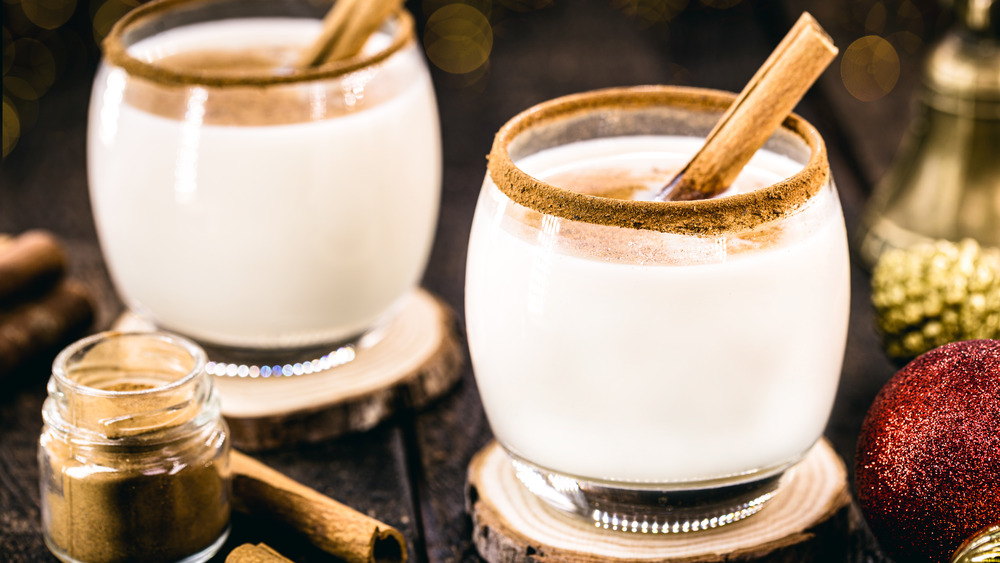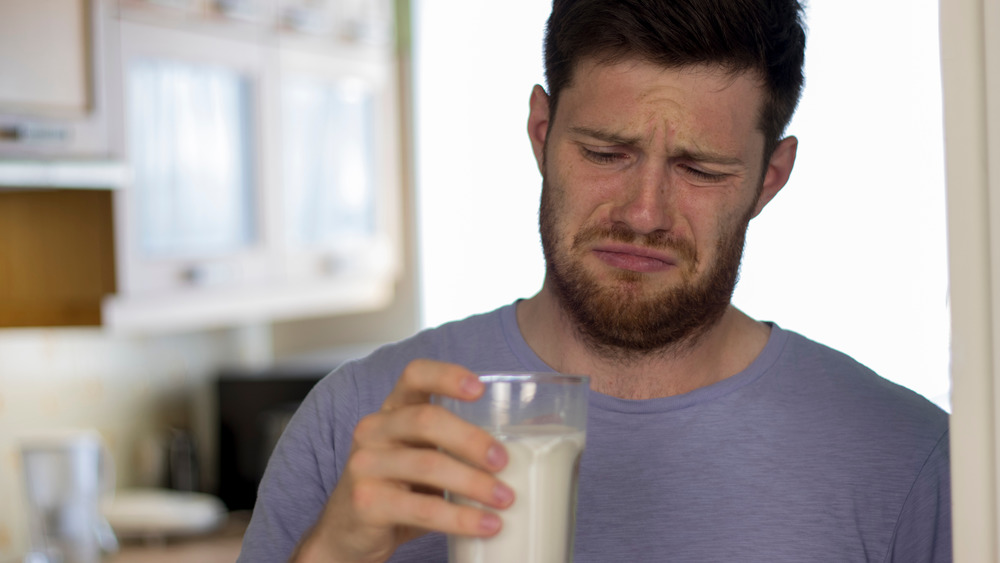This Is Why Your Eggnog Is Getting Chunky
Eggnog can become chunky for a number of reasons, none of them good. Chunks happen, you might say, whether you're picking up eggnog from your grocer's dairy section or making it yourself. When they do, and you suspect your eggnog has gone bad, then throw it out to be on the safe side (via Stack Exchange). Raw eggs may contain salmonella bacteria, which can cause a nasty bout of food poisoning (via CDC).
Chunky homemade eggnog sometimes can be salvaged. In these cases, the chunks come from improper cooking, not from any spoilage. So let's break down some chunky eggnog scenarios, what causes the problem in each situation, and what might be done to fix it. Spoiled or not, nobody wants to drink chunky eggnog. So much of the pleasure in drinking eggnog comes from its smooth, creamy texture.
Let's start with homemade eggnog. The recipe is simple and is a good place for even kitchen novices to start if they want to try to make at least one homemade thing during the holidays. The recipe consists of milk and/or cream, whipped raw eggs, sugar, nutmeg, and sometimes a liqueur such as brandy or rum (via Better Homes & Gardens).
Heat homemade eggnog but don't boil it to avoid chunks
You should heat homemade eggnog in a pan to kill off any bacteria that might be in the eggs. This is called pasteurization, and it most definitely is not called boiling. Your dairy, egg, and sugar mixture should be heated to 160 degrees. If you get much closer to 212 degrees Fahrenheit, which is water's boiling point, then you risk cooking the eggs rather than just sterilizing them. What you end up with, as one Reddit user learned, is a thin, creamy soup full of tiny chunks of scrambled egg. If this happens, Better Homes & Gardens suggests straining your nog through a fine-mesh sieve. Another Reddit user said cheesecloth would work, too. This doesn't seem like an ideal solution. You lose some of the egg in the straining, so you're no doubt losing some of the texture and flavor eggs give to eggnog. It might be best to write off your ingredients as a loss and start over – this time with a candy thermometer.
Let's say your home pasteurization was a total success, or your eggnog is store-bought. Any chunks you find, then, are probably a result of the dairy curdling. Bacteria consume lactose and excrete it as lactic acid, which increases the eggnog's acidity. In a more acidic environment, the milk proteins start to clump together. And with lactic acid replacing all that original milk sugar, the taste will become sourer (via Science Notes).
Trust the best-by date, but trust your eyes and nose more
One Stack Exchange user says it's possible for fresh eggnog to be chunky if the milk, egg, and sugar aren't mixed enough during pasteurization. This would cause the cream to separate from the milk during cooling. The cream, which is just milk fat, will appear as solid chunks in your eggnog. If you determine your eggnog hasn't gone bad, you can take the extra step of thoroughly mixing the cream back into the rest of the eggnog before serving and enjoying it. (To be safe, you might just throw the eggnog away.)
To determine whether your eggnog has turned, check if its color has changed. Since eggnog can vary in color from white to beige to yellow, you would need to know what color it was to begin with (via Eat By Date). You can also give it the sniff test. A sour smell would be the giveaway.
Commercial eggnog should last seven days beyond the "best by" date printed on the carton, but that depends on how it was handled before you got your hands on it. If a pallet of eggnog was left outside a truck for several hours, then it will already be well on its way to going bad. You should only trust the date up to a point. Beyond that, trust your nose and your eyes – and keep an eye out for chunks.


